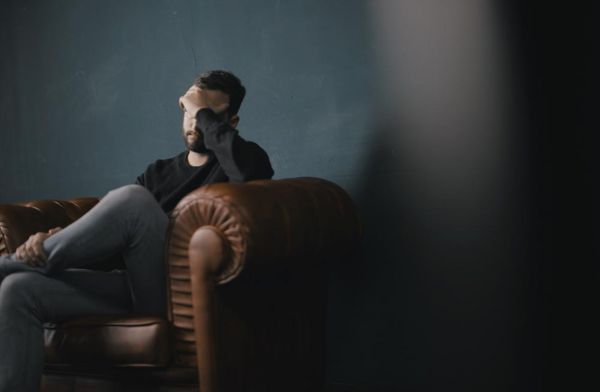 Bipolar disorder is one of the most common mental illnesses in the United States. The National Institute of Mental Health (NIMH) reports that some 2.6% of the U.S. adult population, or roughly 8.5 million Americans, struggle with Bipolar Disorder I and II. This makes it one of the most commonly diagnosed mental health disorders in the United States. The same data shows that 4.4% of Americans will receive a Bipolar Disorder diagnosis during their lifetime, making Bipolar Disorder one of the 5 most common mental illnesses. If you suspect you or a loved one might have Bipolar Disorder, also known as manic depression, the following article covers signs and symptoms, with information you can use to follow up.
Bipolar disorder is one of the most common mental illnesses in the United States. The National Institute of Mental Health (NIMH) reports that some 2.6% of the U.S. adult population, or roughly 8.5 million Americans, struggle with Bipolar Disorder I and II. This makes it one of the most commonly diagnosed mental health disorders in the United States. The same data shows that 4.4% of Americans will receive a Bipolar Disorder diagnosis during their lifetime, making Bipolar Disorder one of the 5 most common mental illnesses. If you suspect you or a loved one might have Bipolar Disorder, also known as manic depression, the following article covers signs and symptoms, with information you can use to follow up.
It’s important to take any medical or mental complaints to a mental health professional or to your physician. While your physician cannot diagnose you with bipolar disorder, they can make a preliminary examination and refer you to a psychiatrist who can. Bipolar Disorder is very often treated with medication, which helps people manage both mania and depression, so they can live a balanced life.
Signs and Symptoms of Bipolar Disorder
American Psychiatric Association’s Diagnostic and Statistical Manual of Mental Disorders Fifth Edition (DSM-5) classifies bipolar disorder as a group of disorders causing extreme fluctuations between states of hypomania and depression. Previously known as manic depression, bipolar disorder causes cycles of intense highs and lows. While intensity varies considerably depending on the individual, type of bipolar disorder, and circumstances, most are distinctly recognizable as a pattern of shifts between two states of mind or moods.
Hypomania
The DSM-5 states that individuals must show 3 or more symptoms of mania to receive a bipolar disorder diagnosis. These include but are not completely limited to:
- Inflated sense of self or ego
- Disregard of need for sleep
- Increased talkativeness (speed of talking)
- Racing thoughts
- Lack of attention span
- Hyper focus on goal-oriented activities (E.g., building something)
- Disregard for potential consequences of action (E.g. lack of funds or social repercussions)
- Psychotic episodes where the individual is unable to tell what is real and what isn’t.
Essentially, a person experiencing hypomania will engage in frequent cycles of manic behavior, in which they are very productive, very hyper, excited, and focused on goals. A manic person might rip out their kitchen in a few days with the intent of replacing it, go on spending sprees, or engage in drug use with no regard for the consequences. Manic bipolar persons are very vulnerable to drug use and addiction, gambling, and reckless or aggressive driving and choices. During psychotic episodes, a manic person may be angry over an assumed slight that never happened, may be suddenly aggressive for something that didn’t happen, and may simply hallucinate a happy event (such as a partner agreeing to marry them or receiving a mortgage).
Manic periods can last anywhere from 2 weeks to several months.
Depression
 Depression always follows a manic episode and may last for about the same time or not. Depressive states are close to but not quite the opposite of mania. The DSM-5 states that you must have at least 5 of the following symptoms in 2 weeks to be diagnosed. These symptoms, without the presence of mania, should result in a major depression diagnosis.
Depression always follows a manic episode and may last for about the same time or not. Depressive states are close to but not quite the opposite of mania. The DSM-5 states that you must have at least 5 of the following symptoms in 2 weeks to be diagnosed. These symptoms, without the presence of mania, should result in a major depression diagnosis.
- Depressed mood is a standard or norm for most of every day
- Little interest or pleasure in most or all activities
- Decrease in appetite and significant weight loss over a short time
- Restlessness or purposeless movement
- Constant fatigue
- Feelings of worthlessness or guilt
- Brain fog and lack of ability to concentrate
- Recurring thoughts of death, suicidal ideation, or suicide attempt
- Psychotic events, typically depressing or feelings of loss
Depression hits following mania, often leaving projects unfinished, sudden debts, and no energy to do or complete anything. Where the manic person will work themselves into the ground to complete something, the depressed person will fall asleep on the couch and find they’ve slept for 12-18 hours. These extreme mood swings mean that the individual is unable to cope with the mess or work left when they were manic. Many people with bipolar disorder also initially blame depression on specific things such as relationship fallouts, things gone wrong, or the results of reckless actions. While these factors can certainly contribute, a bipolar person will go to bed feeling euphoric one day and wake up depressed another, regardless of circumstances.
Types of Bipolar Disorder
Bipolar disorder is divided into three primary disorders: Bipolar I, Bipolar II, and Cyclothymic Disorder.
Bipolar I – Classic manic depression, with periods of mania and depression lasting for more than 2 weeks. Mania and depression are moderate to severe. Psychotic episodes may or may not be present
Bipolar II – Alternating manic and depressive episodes, lasting more than 2 weeks. Bipolar II does not include psychotic episodes. Most mood swings are moderate in nature.
Cyclothymic Disorder – Brief episodes of hypomania and depression, typically lasting less than 2 weeks. This may evolve into Bipolar II or I symptoms at a later state.
Essentially, each “type” of bipolar disorder describes the severity and duration of symptoms. However, only Bipolar I includes psychotic episodes.
See a Mental Health Professional
Chances are, if you’re looking up symptoms on the Internet, you suspect something isn’t right. The best next step is to see a mental health professional or your doctor. Your primary care provider can offer you advice, provide a referral, and help you to move towards a diagnosis that works for you. The symptoms of bipolar disorder overlap with other mental health disorders such as schizophrenia and depression. It’s important to seek out a professional diagnosis before moving forward with treatment or management. In some cases, individuals with bipolar disorder need medication, and often for the rest of their lives. In other cases, bipolar disorder will come and go throughout your life and you can generally manage it with occasional medication and good coping skills. A diagnosis typically involves several weeks of monitoring signs and symptoms, although some psychiatrists won’t offer a conclusive diagnosis for more than half a year.
In almost every case, it’s important to seek out mental health treatment that includes protocols such as cognitive behavioral therapy. Learning to cope with and regulate emotions, to recognize when something is wrong, and to manage symptoms can greatly reduce the impact of bipolar disorder on your life, work, and relationships. Bringing your friends and family to therapy can also help them to learn to cope with you, your symptoms, and to manage the additional emotional distress and labor, while helping you to repair relationships.
While seeking out bipolar disorder treatment requires getting a diagnosis, it’s important that you follow up on any diagnosis you do get. Speak with one of our experienced treatment advisors today at 800-931-9884 for a free assessment.